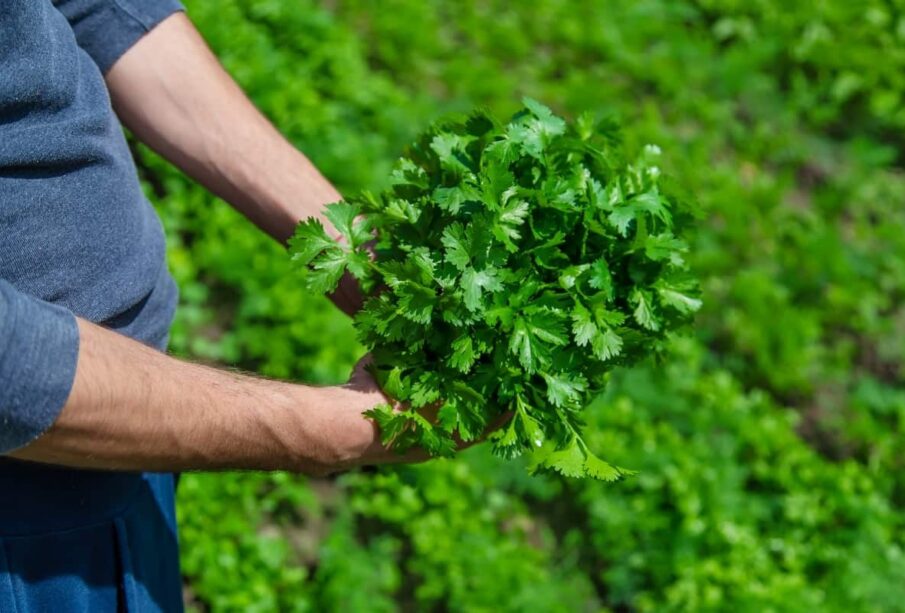What Are Some Tips on Choosing the Right Variety of Coriander Seeds for Your Garden?

Choosing the right variety of coriander seeds for your garden is crucial for a successful harvest, whether you’re growing for leaves (cilantro) or seeds (coriander). Here are some garden tips to help you select the best variety for your needs:
- Purpose of Growth:
- For Leaves (Cilantro): If your primary goal is to harvest fresh leaves, choose a variety known for its foliage production and slower bolting. Examples include ‘Calypso’, ‘Santo’, and ‘Leisure’.
- For Seeds (Coriander): If you’re growing coriander primarily for seeds, select a variety known for its seed production. Varieties such as ‘Indian Coriander’ or ‘Moroccan’ are good options.
- Climate and Growing Season:
- Cool Climates: Choose varieties that perform well in cooler temperatures. Coriander tends to bolt quickly in warm weather, so a slow-bolting variety is ideal. ‘Santo’ and ‘Calypso’ are known for their slow bolting characteristics.
- Warm Climates: If you live in a warmer climate, select heat-tolerant varieties or plan to grow during the cooler parts of the year (early spring or fall). ‘Slo-Bolt’ and ‘Cilantro Long Standing’ are good options.
- Growth Habit:
- Determine if you want a bushy plant with abundant leaves or a taller plant that focuses on seed production. Leafy varieties are usually more compact, while seed-producing varieties can grow taller.
- Disease Resistance:
- Look for varieties that are resistant to common diseases in your area. This can help ensure a healthier crop with less need for intervention.
- Flavor Profile:
- Different varieties can have slight variations in flavor. Some might have a stronger aroma or taste, which can be a deciding factor based on your culinary preferences. Experiment with small amounts of different varieties to find your favorite.
- Days to Maturity:
- Check the seed packet for information on days to maturity. Some varieties may mature faster, which is useful if you want a quick harvest. Others take longer but might produce more foliage or seeds over time.
- Local Recommendations:
- Consult local gardening clubs, agricultural extension offices, or experienced gardeners in your area. They can provide insights into which varieties perform best in your specific climate and soil conditions.
- Seed Quality and Source:
- Purchase seeds from reputable sources to ensure good germination rates and plant health. Organic or heirloom seeds might be preferred if you aim for natural gardening practices.
- Experimental Approach:
- Don’t be afraid to try a few different varieties in your first season. This will give you a sense of which ones thrive best in your garden conditions and meet your needs.
- Hybrid vs. Open-Pollinated:
- Open-pollinated varieties are often preferred for saving seeds, while hybrids might offer specific desirable traits like increased vigor or disease resistance. Choose based on your long-term gardening goals.
By considering these factors, you can choose the right variety of coriander seeds that will thrive in your garden and meet your culinary needs. Read more in these gardening books and magazines.
What Are Some Soil Preparation Tips for Coriander Seeds in Your Garden?
Proper soil preparation is key to growing healthy coriander (cilantro) plants. Here are some tips to ensure your soil is well-prepared for planting coriander seeds:
- Soil Testing:
- Conduct a soil test to determine the pH and nutrient levels of your garden soil. Coriander prefers a pH between 6.2 and 6.8. Adjust the pH if necessary using lime (to raise pH) or sulfur (to lower pH).
- Soil Texture:
- Coriander grows best in well-draining, loamy soil. Avoid heavy clay soils that retain too much water or sandy soils that drain too quickly. If your soil is heavy clay, amend it with organic matter like compost or well-rotted manure to improve drainage and texture.
- Organic Matter:
- Incorporate plenty of organic matter into the soil before planting. This can include compost, aged manure, or leaf mold. Organic matter improves soil fertility, structure, and moisture retention.
- Soil Fertility:
- Coriander does not require heavy feeding, but it benefits from a balanced, nutrient-rich soil. Before planting, mix in a balanced organic fertilizer (e.g., 10-10-10) or a slow-release granular fertilizer. Avoid high nitrogen fertilizers, as they can promote excessive foliage at the expense of seed production.
- Tilling and Loosening Soil:
- Till or dig the soil to a depth of 8-12 inches to loosen it and remove any weeds, rocks, or debris. This helps the coriander roots to penetrate easily and establish themselves.
- Soil Moisture:
- Ensure the soil is evenly moist but not waterlogged. Well-drained soil is crucial for coriander, as it is prone to root rot in waterlogged conditions. Raised beds or well-prepared garden beds with good drainage are ideal.
- Mulching:
- Apply a layer of organic mulch, such as straw, grass clippings, or shredded leaves, around the coriander plants. Mulch helps retain soil moisture, suppress weeds, and regulate soil temperature.
- Spacing and Planting Depth:
- Sow coriander seeds about 1/4 inch deep and 6 inches apart in rows. Thin seedlings to 12 inches apart once they are a few inches tall to provide adequate space for growth and air circulation.
- Watering Practices:
- Water the soil thoroughly after planting to help the seeds germinate. Keep the soil consistently moist but not soggy during the growing season. Water early in the day to allow foliage to dry before evening, reducing the risk of fungal diseases.
- Weed Control:
- Keep the planting area weed-free, especially during the early stages of growth. Weeds compete with coriander for nutrients and water. Hand-pull weeds or use a hoe to remove them without disturbing the coriander plants.
By following these soil preparation tips, you can create an optimal environment for growing healthy coriander plants that will thrive and provide you with an abundant harvest.
What Is a Main Health Benefit of Coriander Seeds in Recipes?
Digestive Health
- Promotes Digestion: Coriander seeds are known to aid digestion by stimulating the production of digestive enzymes. This helps in the breakdown of food and absorption of nutrients.
- Relieves Digestive Disorders: They can help alleviate symptoms such as bloating, gas, and indigestion. Coriander seeds have carminative properties that reduce gas and bloating.











